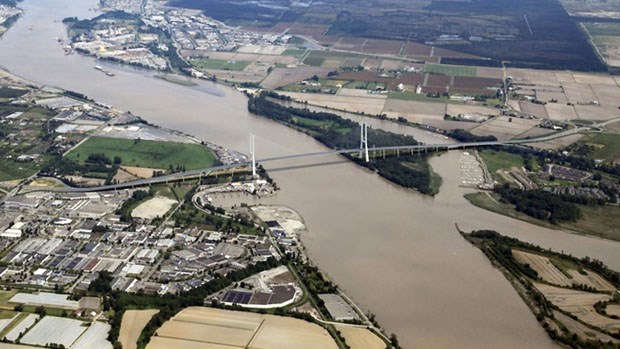The footings for the bridge to replace the George Massey Tunnel will hold firm, the Ministry of Transportation and Infrastructure has assured following questions about the structural integrity of the $3.5-billion project.
After a request for further information from the Optimist, the ministry released a “Fact Sheet” this week on the geotechnical issues regarding the 10-lane structure that will span the Fraser River delta and its soft soils on either side.
“Bridging major rivers through soft deltaic soils is a challenge that bridge engineers have developed and honed over the centuries of bridge foundation design,” the ministry document states.
In a letter sent recently to B.C. NDP Leader John Horgan, retired engineer Tom Morrison reiterated concerns raised by other bridge opponents when it comes to structural issues, particularly foundation challenges they say could skyrocket the price or prevent the bridge from being built altogether.
It was similar to a letter the Tsawwassen resident submitted to the Optimist in which he cited the fact that boreholes drilled by a ministry contractor on the north and south shores of the Fraser River in 2013 went to a depth of 335 metres (1,100 feet) without reaching bedrock.
Morrison also noted a 1995 Geological Survey of Canada paper estimated the depth to bedrock at the bridge site at 600 to 700 metres (1,970 to 2,300 feet), something not disputed by the ministry.
He questions why the bridge is going to be built on 2,000 feet of waterlogged sand and mud in an area assessed at moderate to high risk of liquefaction in the event of an earthquake.
Morrison said other regional bridges were built on piles penetrating 80 to 100 metres into the ground, bottoming in thick and extensive layers of hard, dense clay, sand and gravel that provided the necessary foundation strength.
Noting how a relatively new 58-storey apartment building in San Francisco began leaning likely due to the material it rests on, the retired engineer said the alternative is to keep the existing tunnel and build a second one.
However, according to the ministry, full scale test piles and extensive geotechnical subsurface studies undertaken since 2014 confirmed the heavy loads can be supported. Below the soft spoils is a very dense, strong layer that is several hundred metres thick, while the new bridge foundation design calls for ground improvements to prevent sand near the surface from liquefying in the event of an earthquake.
“Thousands of hours of professional geotechnical and bridge structural engineering have been dedicated to ensuring that the new George Massey replacement bridge and its supports are appropriately designed for conditions at the crossing site and for a major seismic event,” the ministry explained.
The Fact Sheet, which compares other deep foundation bridges in B.C. and around the world, also provides a case against the existing tunnel and building a new one.
Bridge construction is expected to start this year and be completed by 2022.



